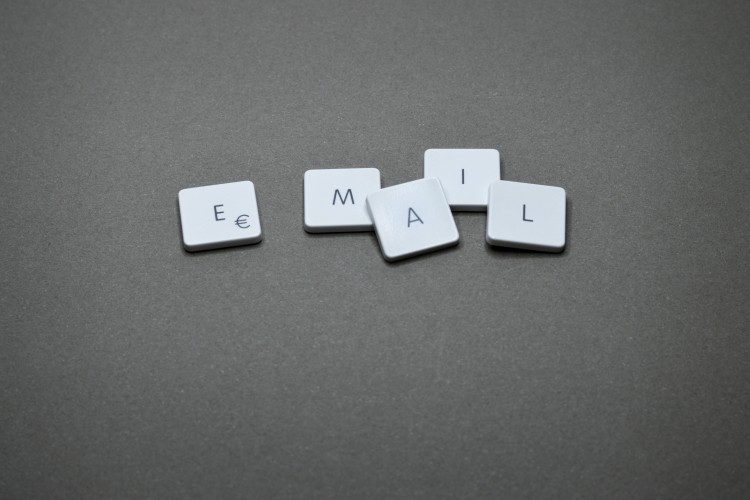This is one topic which does not need an introduction. There is rarely any professional set-up which functions without emails today. Thus email writing in English is as basic to business as running is to sports, but still, we all struggle in writing effective mails. That’s because it needs skills which have to be developed. Imagine if you had an accurate email writing format!
Here’s a proper email writing format you can follow.
Also Read: Online English Speaking Course App: Top 8 Apps to Improve Your English Speaking
Guide for Better Email Writing in English
You’re not alone if you’re stumped on how to write an email in English.
For decades, mail has been critical to the internet’s success.
Email, on the other hand, is here to stay.
An mail address is still required, and people send mails on a daily basis.
As a result, being able to compose a strong, clear mail in English is a crucial skill. It can assist you in finding work, making friends, enrolling in college, and much more.
Email Writing Format
Subject Lines
Be as specific as possible. One word subjects such as “Hi,” “Question,” or “FYI” are not informative and don’t give the reader an idea of how important your message is. Think about the subject lines on the e-mail messages you receive. Which ones do you think are most effective? Why?
Greetings and Sign-offs
Don’t just start with your text, and don’t stop at the end without a polite signature. When in doubt, address someone more formally to avoid offending them. Some common ways to address your reader are:
Add a prefix like ‘Dear’, ‘Hello’ and ‘Hi’ before the name of the person. Example- Dear Professor Smith, Hello Ms McMahon.
Example
Dear Professor Shastri,
Hello Miss Pooja,
Hi, Neha k,
If you don’t know the name of the person you are addressing, or if the mail addresses a diverse group, try something generic, yet polite:
To whom it may concern,
Dear members of the selection committee
Hello everyone
Also Read: How to Boost Your Vocabulary? Learn Some Ways to Boost and Enhance Your English
Closing
Your closing is extremely important because it lets the reader know who is contacting them. Always sign off with your name at the end of your mail. If you don’t know the reader well, you might also consider including your title and the organisation you belong to. For example-
Mary Watkins
Senior Research Associate
Mckinsey
For your closing, something brief but friendly, or perhaps just your name, will do for most correspondence:
Thank you,
Best wishes,
See you tomorrow,
Regards,
For a very formal message, such as a job application, use the kind of closing that you might see in a business letter:
Sincerely,
Respectfully yours,
Cc & Bcc in Email Writing Format in English
Copying individuals on an mail is a good way to send your message to the main recipient while also sending someone else a copy at the same time. This can be useful if you want to convey the same exact message to more than one person.
Be aware, however, that when you send a message to more than one address using the Cc: field, both the original recipient and all the recipients of the carbon copies can see all the mail addresses in the To: and Cc: fields. Each person who receives the message will be able to see the addresses of everyone else who received it.
Blind copying mails to a group of people can be useful when you don’t want everyone on the list to have each other’s mail addresses. The only recipient address that will be visible to all recipients is the one in the To: field.
Tips for the Middle Porting of Email Writing in English
Think about your message before you write it.
Reflect on the tone of your message.
Strive for clarity and brevity in your writing.
Briefly, state your purpose for writing the mail at the very beginning of your message.
Be sure to provide the reader with a context for your message.
Use paragraphs to separate thoughts (or consider writing separate emails if you have many unrelated points or questions).
Finally, state the desired outcome at the end of your message.
Format your message so that it is easy to read.
Proofread.
Also Read: Types of Figure of Speech in English: Examples of Figurative Language to Ace English
Sample Email Writing
Use what you’ve just learned to explain why Student 2’s mail to Professor Jones is more effective than the e-mail written by Student 1. How does the tone of the messages differ? What makes Student 2’s mail look and sound more appropriate? What are the elements that contribute to its clarity? If you were Professor Jones and you received both mails, how would you respond to each one?
Sample from Student 1
hey,
i need help on my paper can i come by your office tomorrow
thanks
Sample from Student 2
Hi Dr Jain,
I am in your ENGL 101 class on Thursdays, and I have a question about the paper that is due next Tuesday. I’m not sure that I understand what is meant by the following sentence in the prompt:
“Write a 10-page paper arguing for or against requiring ENGL 101 for all UNC freshmen and provide adequate support for your point of view.”
I am not sure what you would consider “adequate” support. Would using 3 sources be o.k.? Can I come by your office tomorrow at 2:00 pm to talk to you about my question? Please let me know if that fits your schedule. If not, I could also come by on Friday after 1:00.
Thank you,
Nitin Roy
Sample Email Writing
Here are two versions of an mail from a supervisor, Jane Doe, to a group of her employees. Which version do you think is most effective? Why?
Version 1 of Jane’s Mail
Subject: materials for Wed. staff meeting
As you know, tomorrow afternoon we’ll be meeting to discuss the status of all of our current projects. Donuts will be provided. Be sure to arrive on time and bring along the materials you have been working on this week—bring enough copies for everyone. Some of this material might include your calendars, reports, and any important emails you have sent. Also, I wanted to remind you that your parking permit requests are due later this week; you should turn those into Ms Jayshree, and if she is not at her desk when you stop by, you can email them to her.
Version 1 of Jane’s Mail
Subject: tomorrow
Hi, everyone— For tomorrow’s 3 p.m. staff meeting in the conference room, please bring 15 copies of the following materials: Your project calendar A one-page report describing your progress so far A list of goals for the next month Copies of any progress report messages you have sent to clients this past month.
Tips to Write Email in English
“Is there a better or faster way to handle this situation?” Ask yourself. Because many people receive dozens or even hundreds of mails per day, make sure that mail is the quickest, clearest, and most efficient method of communication in your situation.
If you’re writing to a coworker or a friend you see frequently, for example, you should probably just talk to him or her in person. Alternatively, you could send a text message or make a phone call.
If you’ve decided that sending an email is the best option, consider the following suggestions before pressing the “Send” button.
Also Read: Best App to Practice English Speaking: Go Digital at the Comfort of Your Home for Fun Learning
Keep Your Business and Personals Different
This may not be applicable to everyone, but if you can do it, it will benefit you greatly.
Many jobs provide you with an e-mail address that you must use. If this is the case, the issue is resolved. For work, use your business email address, and for personal emails, use your personal email address.
It can make an email look more professional if you use a business mail address. If you’re writing a formal mail, this is fine, but if you’re writing to a friend, it’s not so nice. As a result, having two can be advantageous.
Separate accounts can also assist you in balancing your personal and professional lives.
Be Accurate, Clear and Polite
Every day, many people receive a large number of emails. The recipient may not respond right away if your email is confusing, angry, or extremely long. They may eventually forget to respond or simply delete it.
So make sure to get right to the point, but not in an obnoxious manner.
Treat an email like an essay, but much shorter, and you’ll most likely get good results. You must introduce the topic, explain the various points, and then conclude the topic in an essay.
Don’t Write if You Can’t Write Something Good
When you’re frustrated or angry about something, it’s easy to write a mean email. However, it is not worthwhile.
Wait until you’ve calmed down before sending your email if you’re angry. It’s better to wait a day than to lose your job or ruin a friendship because you said something stupid in a fit of rage.
Don’t Over Communicate
The sheer volume of emails that people receive is one of the most stressful aspects of their jobs. So, before you start typing an email, ask yourself, “Does this really need to be written?”
Also, email isn’t always as secure as you’d like it to be, especially when people forget to delete the conversation history when forwarding emails. So don’t send emails containing sensitive or personal information, and don’t write about anything you, or the subject of your email, wouldn’t want plastered on a billboard near your office.
Grab Attention
A newspaper headline serves two purposes: it attracts your attention and sums up the article so you can decide whether or not to read it. Your email message’s subject line should do the same thing.
They will mark it “spam” because, if you have a blank subject line or the subject is irrelevant. So, always include well-chosen words and be clear in your tone in the subject line to convey the meaning properly.
If your message is part of a regular series of emails, such as a weekly project report, you might want to include the date in the subject line.
Also Read: Vocabulary Words with Meaning and Sentences: Tips to Improve Your Spoken English
Maintain Your Credibility
Present yourself as the dependable expert you are.
#Use proper etiquette and say please and thank you as needed.
#Avoid exclamation marks, slang, and smiley faces in your writing.
#Use a proper greeting and opening, but refrain from making insincere small talk.
#Include a suitable sign-off that matches the email’s tone.
#Maintain a simple and brief email signature: Images should be kept to a minimum, and cursive fonts should be avoided.
#Use a limited number of high-importance flags.
Present It Thoughtfully
Give just enough information in just the right way so that your reader can and wants to read your message.
#Your main message and call to action should be near the top of the page so that it is the first thing your reader sees.
#Sort the rest of the data from most important to least important.
#To increase the chances of receiving a response, keep the number of issues covered in the email to a minimum.
#Write succinctly and to the point: Try to keep your response to 150 words or less.
#Instead of jargon and difficult words, use short, everyday words.
#Keep sentences short and avoid acronyms and terms that your reader will not understand.
Write it Flexible to be Scanned
Onscreen content is not read word for word. The majority of us, in fact, scan a web page in an F-shaped pattern. Layout and formatting should be used to guide your reader through the email and to your main points.
#Put your most important message and call to action at the top of the page.
#Use headings to break up a long email with a lot of information.
Write in short, easy-to-understand chunks: Use short paragraphs and bulleted or numbered lists.
#Don’t use too much boldness because if you do, you’ll end up emphasising nothing.
#All caps, large fonts, and a jumble of colours are distracting to the reader.
Proofread It!
Finally, before hitting “send,” double-check your email for spelling, grammar, and punctuation errors. Because your email messages are as much a part of your professional image as the clothes you wear, sending a message with typos looks bad.
Pay close attention to the length of your email as you proofread or edit the content. Well, reading long and lengthy emails are a little boring, because we all want information to the point. So, write your emails short and concise. No rambling and make sure you keep it as brief as possible with necessary information.
Conclusion
Read the entire article to understand the email writing format very well and then reply in the comment box regarding which version of the emails do you think is right and why? Best of luck.
Also Read: Don’t Want to Migrate? Thinking About the Preferable Spoken English or IELTS Course?






